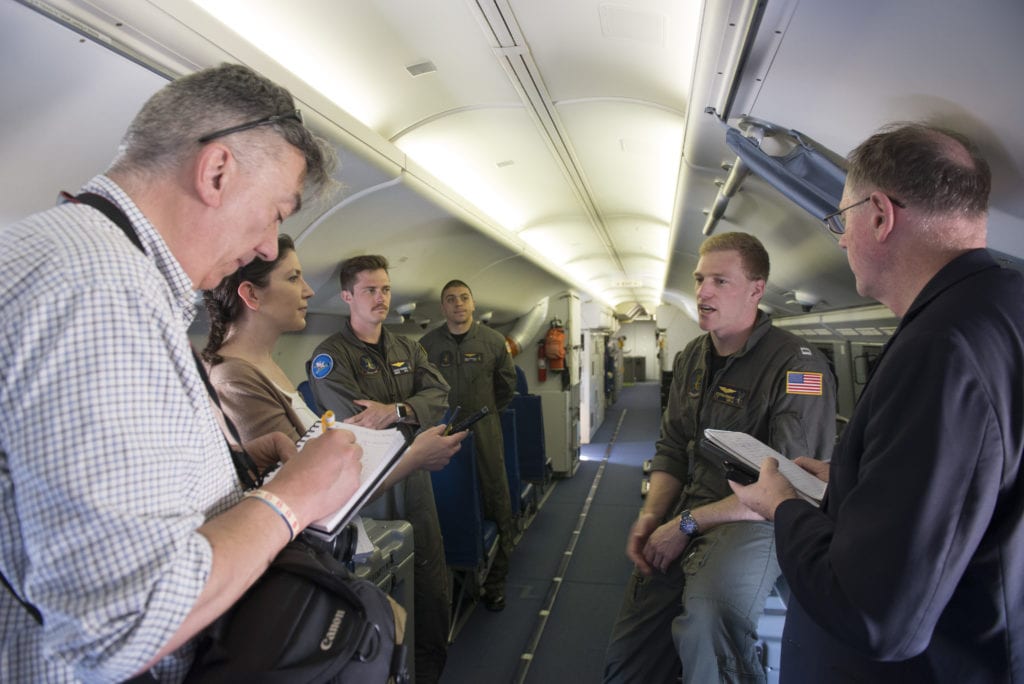
NATO will exercise its anti-submarine warfare and anti-surface warfare capabilities of allied naval units from Feb. 22 to March 5 during Exercise Dynamic Manta in the central Mediterranean.
Dynamic Manta 2021 includes five surface combatants with their organic helicopters from France, Greece, Italy, Spain and Turkey; six submarines from France, Germany, Italy, Turkey and the U.S.; five land-based maritime patrol aircraft from France, Germany, Greece, Italy and the U.S.; and the French Navy’s Charles De Gaulle Carrier Strike Group, with escorts from France, Germany, Greece and the U.S.
Spanish navy Rear Adm. Manuel Aguirre Aldereguía, commander of Standing NATO Maritime Group Two (SNMG 2), is the on-scene commander of Exercise Dynamic Manta.
Last year, Dynamic Manta 2020 began just as the global pandemic was gripping Italy and the world. This year, the exercise was planned and is being executed with all the precautions and health regulations to keep people safe.
According to French navy Vice Adm. Didier Piaton, deputy commander of NATO Allied Maritime Command, Dynamic Manta in the Mediterranean is one of two major anti-submarine warfare exercises held each year, along with Dynamic Mongoose in the high North Sea.
“Like all MARCOM exercises, this one will demonstrate NATO’s willingness and capacity of keeping resilience and readiness, and to maintain the security of our allied nations,” Piaton said.
This year, the French navy’s Charles DeGaulle carrier strike group will join for training for a limited time, and will enhance its own ASW skills on its way to its operational deployment. This interaction is an opportunity for NATO and allied units to train together to enhance interoperability and build expertise.
The Italian navy is hosting the exercise in waters near the Sicilian city of Catania, not far from the naval air station at Sigonella. Rear Adm.Andrea Petroni, commander of the Italian navy’s submarine service, said the central Mediterranean and its location on the southern flank of Europe represents a realistic and valuable training opportunity.
“It’s important to participate in this kind of advanced International training activity to exchange knowledge and share lessons learned in order to increase the operational capabilities and professional development of the crews,” Petroni said.
Aldereguía said COVID-19 was a new factor in exercise planning process. Procedures were instituted to prepare the units of SNMG 2 so the task group can maintain its high degree of readiness while taking care of the health and well-being of the crews and staff members.
“We are in a COVID-limited environment, “said U.S. Navy Rear Adm. E. Andrew Burcher, Commander Submarines, NATO, and exercise director. “A year ago, we became aware of the virus just as Dynamic Manta 2020 was starting. We had to make adjustments as we went. We were able to hold Dynamic Mongoose 2020 later in the summer. And we’re going ahead and conducting this exercise, with no material impact on the operation or the exercise. It shows how well the NATO Alliance and the countries have adapted to this new reality and travel-restricted environment. We’re doing the best we can under the circumstances, and that’s a testament to how great this organization is.”
While NATO is technically able to complete the exercise and have a productive training experience, Burcher said the pandemic has precluded a lot of personal interaction compared to previous years.
“What’s lost are the personal connections that make the alliance stronger,” he said. “Our center of gravity of NATO is alliance cohesion, and the reason alliance cohesion exits is because of the friendships and partnerships exist when we meet personally on ships and shake hands with each other.”
Burcher said there are other differences between the 2020 and 2021 event. Although NATO’s Science and Technology Organization Center for Maritime Research and Experimentation (CMRE) will not join the ships at sea with its research ship, the Alliance, and its group of unmanned vehicles as they did in 2020, CMRE will still be involved this year. “We will be utilizing CMRE for technical analysis capability to improve our training as well as our understanding of the operating environment,” Burcher said.
“Most importantly, we’re going to have the benefit of having the Charles de Gaulle carrier strike group go through the exercise area,” Burcher said. “This is an important and unique opportunity for both the submarines and the surface ships to engage in a high threat environment. The submarine will be looking at how they prosecute a high-value unit as it transits in a typical transit scenario, while at the same time the CSG will be able to proceed through a submarine-dense environment and practice their ASW skills. That is a unique opportunity. We are taking advantage of integrating the schedules of national operations with NATO operations.
“Even in the COVID environment we are advancing and moving forward with our ASW skills,” Burcher said.
- A Day to Remember - September 11, 2023
- Indo-Pacific Maritime Security Exchange will examine emerging capabilities and capacity - July 12, 2023
- Cold Waters Spark Warm Relationship - April 20, 2023






